With integration and globalization today, societies around the world have developed. As a result of development, the role of women, in general, has changed not only in the family but also in society. Staying at home is not the only thing they can do, they now participate in the activities of the company and fortunately!
On the occasion of Vietnamese Women’s Day, March 8, HORIZON VIETNAM TRAVEL’s marketing team paid a visit to the Vietnam Women’s Museum to collect both information and photos to release an article about Vietnamese women. This outing is considered a significant activity of the team in honour of all women – half the world.
Indeed, in this article, we mainly talk about the role of Vietnamese women in the family in the past and how it has changed in recent days. In addition, through the image of Vietnamese women, the family, cultural and social values of the Vietnamese people from yesterday to today are also clearly manifested.
Summary
At first
In Vietnam, matriarchy appeared in the Upper Paleolithic. At that time, women were more respected than men since men had no economic control. Women were responsible for fruit picking, harvesting, breeding as well as delivering food, so they had more power in the tribe. It can be said that this economic form during this period shows that the role of women is becoming important.
During the feudal period
However, with the development and changes in history, matriarchy was replaced by patrilineality. After China came and maintained its rule over Vietnam for more than a thousand years, Chinese culture affected the Vietnamese tradition. The Chinese ruled and educated the Vietnamese people with their literature and ideas, especially Confucianism. Under Confucianism, women were strongly influenced. With patrilineality, women were not recognized, only men were the head of the family and society. As a result, women were barely treated in the same way as men in all aspects of life.
In the family, women had to do all household chores, take care of their husbands, parents and children and raise them. The family is the nucleus of society according to Confucianism, but Confucianism refused to recognize the important role of women in the family despite having done everything and taken care of the family.
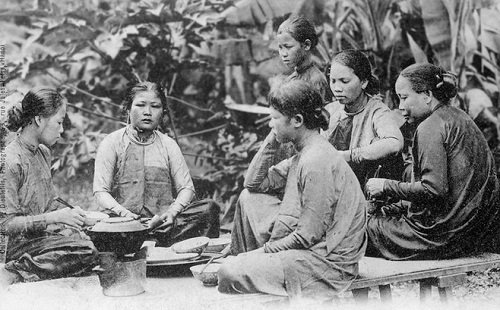
Indeed, living in a patriarchal society with strong Confucian values, Vietnamese women had many standards to uphold. Three obediences and four virtues are what many Vietnamese women know by heart and have been passed down from grandmother to mother, from mother to daughter.
Three obediences include:
– Until marriage, the woman must submit to her father as a daughter
– After marriage, she submits to her husband as a wife
– In case her husband disappears, she must submit to her son.
Four virtues are:
Công – Dung – Ngôn – Hạnh in Vietnamese
– Good skills at home: embroidery, sewing, cooking, especially to raise children
– Beauty and gentle appearance: take care of their beauty, because it is also considered the pride of their husbands. Women do not need to be too beautiful, but to be neat, clean and not sloppy!
– Appropriate speech: Girls must learn to speak softly, unhurriedly and with respect at a young age.
– Exemplary conduct: this virtue is generally considered the most important because it could significantly affect the happiness of women in life. Her conduct is reflected in the way she behaves and treats the people around her. It is essential that a woman, at home, be respectful to the elder, considerate towards the young, obey her husband, take good care of her children and live in harmony with her husband’s family. During her outings, she must be moderate.
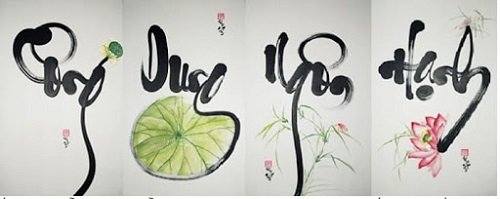
With regard to work and education, women do not have a job outside their families. They stayed only at home, did family work, agricultural jobs such as livestock, culture, etc. and took care of their children. During this period, a few women were able to study. Most women in rural areas are illiterate. Only some women from wealthy families could study, but they could not earn a high level in their studies. They just studied enough to make their fathers and husbands feel happy. It was ridiculous and unfair. In addition, women should learn to cook well and become good wives and mothers.
Another unfair thing is that they can’t decide how many babies they want to have because they don’t have to stop giving birth before they have a son. Paternity has emphasized that only men can inherit family belonging and family succession. It can be said that for people of this period “A single boy is positive; ten girls is still negative.” As a result, only men could participate and become members of the public service.
It can be seen that during this feudal period, women were invisible in society and even in their families. They had no voice, no decision as well as they could not say what they thought. Even in marriage, they still did not have the right to choose the person they wanted to marry. And when they are not satisfied with the marriage, they could not divorce, only men could file for divorce.
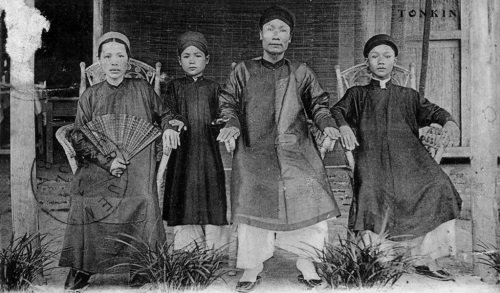
In colonial times
The feudal period was replaced by the colonial period which began with the arrival of the French and Americans in Vietnam. During this period, under the influence of the ideas of freedom in these two countries, there were less strict regulations for Vietnamese women than in feudal times. In addition, during the Vietnam War, women had to go out and they had a specific role in substantive support. However, women in rural areas were still invisible and did not have a balancing role.
In addition, the position of women reached a new stage after the victory of the revolution in 1945. The government has officially recognized equality between men and women. For example, women can go to school like men.
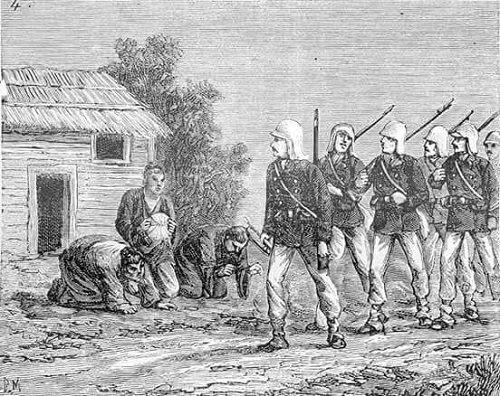
Today
Nowadays, with the development of society and economy, Vietnamese women are more independent than before. Now they are getting the role of balance in families as well as in societies. Vietnamese thinking about women is now changed. Women no longer have to worry about social barriers or social prejudices.
In contemporary life, Vietnamese women contribute to building a developing society of peace. Traditional values make contemporary Vietnamese women generous women, full of energy and passion, who also know how to assert their personality. They embark on studies, enrich their knowledge, to improve their skills. In this way, they value their role in the family and in society.
Indeed, in the family, they no longer stay at home and no longer do all the household chores alone. These family things are now the responsibility of all men and women. Women can ask their husbands to help them with housework and childcare. They can also participate in decision-making regarding family problems. They preserve family happiness through their love, their sense of responsibility and their courage in the face of trials.
In society, they participate in social life with dynamism and competence, passion generosity. Prominent politicians, successful businesswomen, dedicated scientists, talented artists, successful sportswomen, courageous peasants, all these generous women move society forward.
They are only at the beginning of their history and will continue to play an essential role in the national development that is opening up to the world.
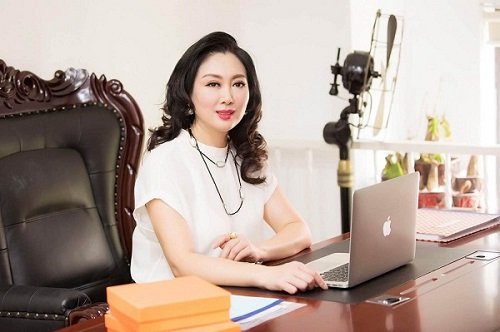
In short, whatever the period, women have responsibilities that correspond to the duties and morals of the Vietnamese.
Although things have changed a lot, the roles between men and women are still well defined, and there is still a certain imbalance of tasks! The difference today is that women are free to assume these responsibilities and remain educated in this sense.
Whatever the difficulty; Vietnamese women consider the following missions to be the noblest and most sacred things.
Childbirth
Before the 60s, women often gave birth at home or outside. Depending on the population, they give birth standing, sitting or kneeling. To facilitate childbirth, the Việt eat sesame soup. In case of difficulty, the Hmong and the Yaos, invite a master of the ritual. Thai people apply sesame paste to the belly. The Hmong bury the placenta at the foot of the main column of the house. The Êđê put him in a calabash buried at the edge of spring. Other populations hang it on a tree in the forest. Today the birth takes place in the dispensaries and the cord is ritually cut at home.
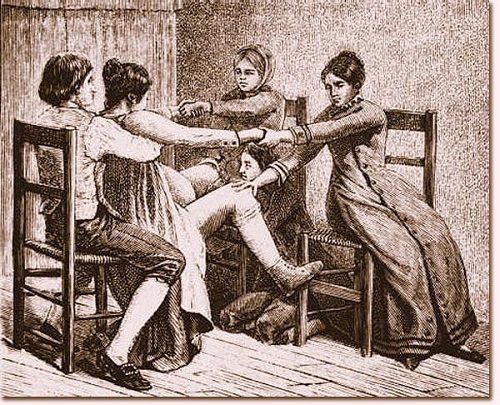
Meal preparation
For women, preparing the daily meal takes a lot of time. They obtain basic products through fishing, picking, farming or market purchases. Shelling and winnowing of rice, storage and preservation of food are still the work of women. They know the seasons for vegetables, fruits, and animals. From their early childhood, the girl learns to cook with her mother. Very quickly, she knew how to cook rice, ferment vegetables and make alcohol. Each population has its own way of preserving food. They are dried in the sun or fire, dirty or stored in fat.
Today the preparation of the meal has changed a lot. Almost everywhere, the shelling machine is used. The kitchen is modernizing. Cooking on three stones over a wood fire is gradually replaced by coal, gas or electricity. In the face of the market economy, autarky has practically disappeared.

Children’s education
In the traditional family, the sharing of work between father and mother is quite marked. Women provide housework and child-rearing, while men are the economic pillar of the family. The pregnant woman protects herself from her child by eating well and resting. When the child grows up, she teaches him the essentials of life through lullabies, legends, and tales but also through learning toys to familiarize him with daily work. The little girl accompanies her mother in all her activities to learn about her future role as a woman.
The habit of carrying the child with oneself remains very common in large cities. In the northern countryside, all children wear hats. They protect them from the cold and are beautifully decorated, to beautify them. Often garnished with an amulet, they are thus protected against awkward spirits. In contemporary society, both parents play an equally important role in the education of their children.
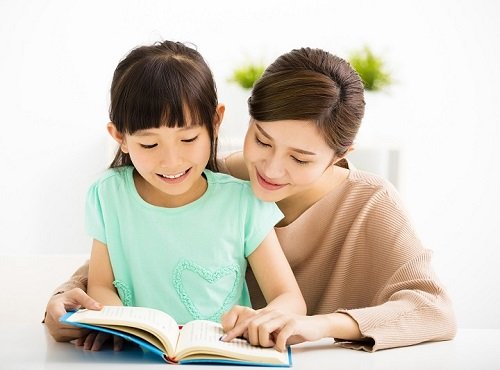
The Vietnamese have the saying:
« Lên non mới biết non cao
Nuôi con mới biết công lao mẫu tử »
In French:
” It is by climbing the mountain that we know that it is high.
It is by raising a child that we understand the sacrifices of parents.”
Conclusion
It can be summarized that in the trend toward integration and globalization, the role and position of Vietnamese women in society are recognized and balanced with men. However, there is yet another side where women are not respected. The more society develops, the more likely Vietnamese women are. They represent half the world, so their role and position in the family as well as in society should be given more consideration.



